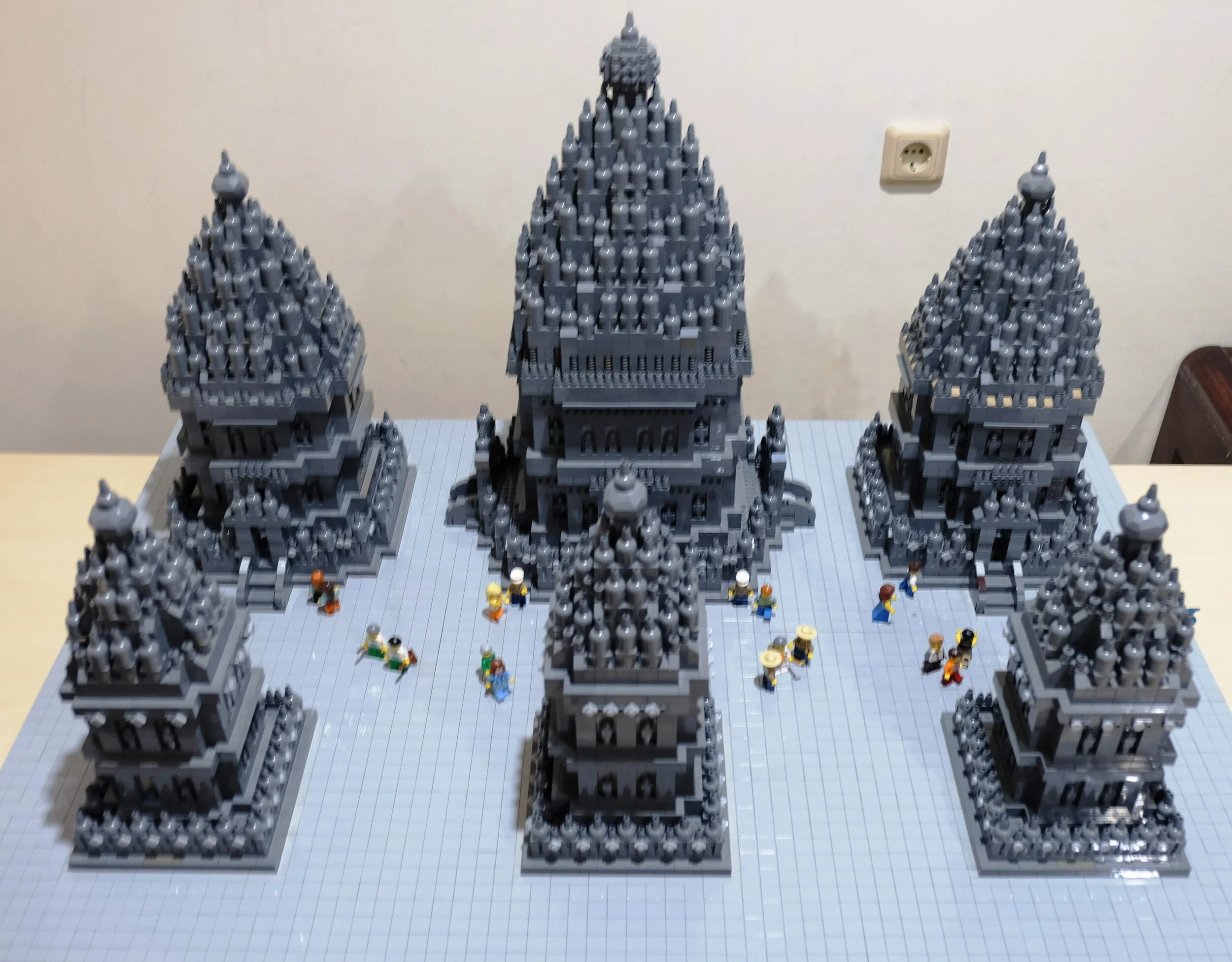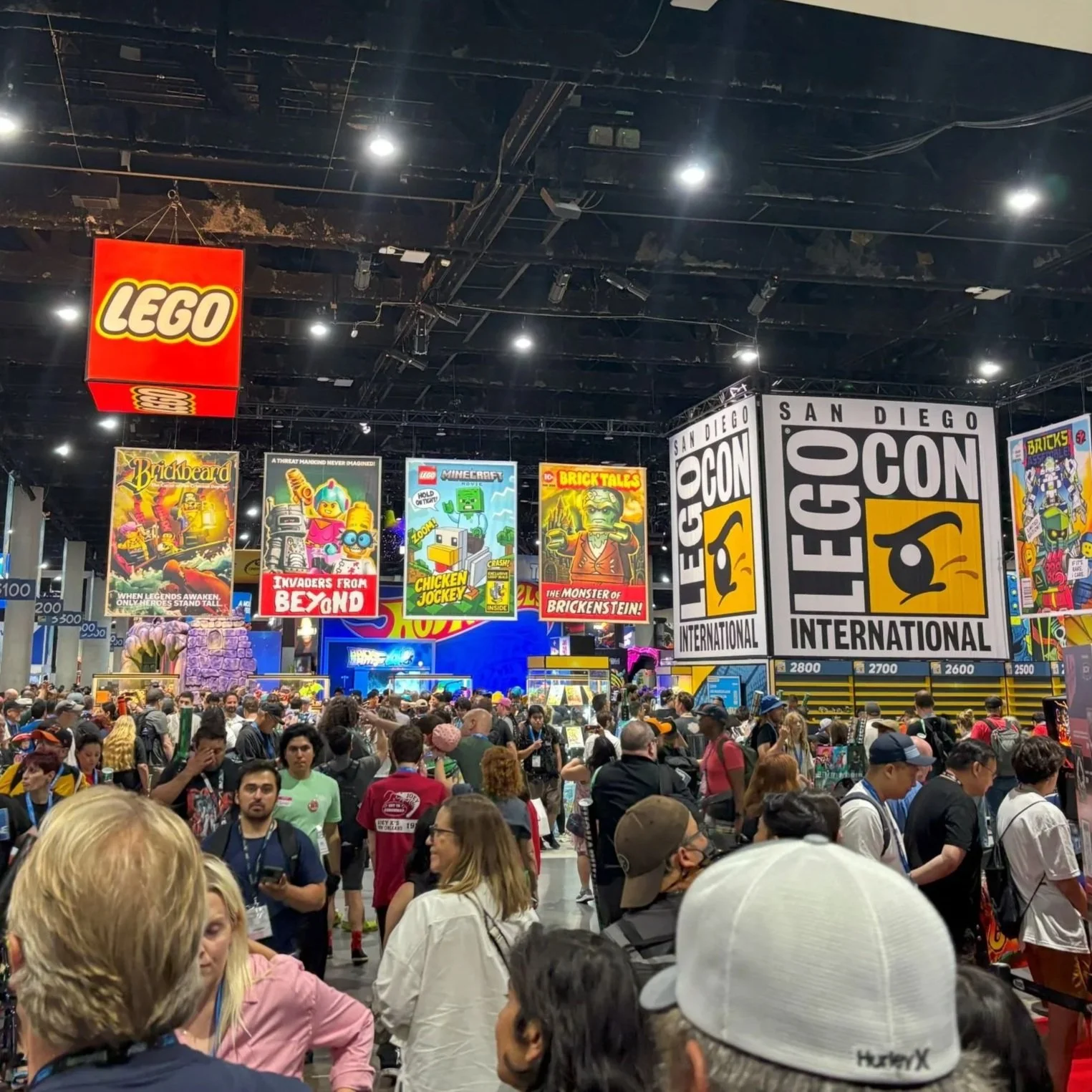The LEGO Prambanan Temple: Building a World Heritage Site
/Indonesia has long fascinated me with its vibrant culture, amazing architecture, and warm people. I remember how amazed I was, as a teenager visiting in 2000, at the beautiful artwork that was proudly showcased all over the Jakarta airport. And that was just the airport! I have wanted to go back for years, but of course Covid has derailed all travel plans for the foreseeable future.
Fortunately, the Pandemic hasn’t stopped us from meeting new friends and exploring places – virtually, of course. Join me as I explore one of Indonesia’s heritage sites, the Prambanan Temple Compound, built in LEGO by Subagyo Wirjantoro.
Inez: Hi Subagyo! Before anything else, can you tell us a little bit about your LEGO journey?
Subagyo: I have known LEGO since I was a child. At that time, my father brought LEGO home from a business trip abroad. Since then, my dad bought some more LEGO sets for us to play with. My interest in LEGO grew even bigger after I entered a competition in the 1980s and I won the runner-up prize. The match was held by the LEGO distributor at the time.
In December 2007, I met Victor and Klub Lego Indonesia (KLI), during an exhibition over the Christmas holiday. After this, I joined KLI. From there I got the opportunity not only to build LEGO sets, but also to build MOCs, through exhibitions with KLI.
Indonesian builder, Subagyo Wirjantoro, with part of his LEGO collection.
Inez: I wanted to talk to you about your LEGO Prambanan Temple. Can you tell us more about it, and why did you choose to build it in LEGO?
Subagyo: The idea to build the Prambanan temple came up after visiting the Piece of Peace exhibition in Singapore, which displays historical structures from all over Asia. I wanted to build Prambanan, which is one of the symbols of the greatness of civilization in Indonesia in the past. Another reason I built it is to challenge myself to make buildings with complex structures that are modular and in minifig scale. I liked it when my thought became reality.
Here is a short history about Prambanan from Wikipedia:
Prambanan temple or Rara Jonggrang is an 8th-century Hindu temple compound in Region of Yogyakarta, Indonesia, dedicated to the God of Trimūrti, the expression of God as the Creator (Brahma), the Preserver (Vishnu) and the Destroyer (Shiva). The temple compound is located approximately 17 kilometres northeast of the city of Yogyakarta on the boundary between Central Java and Yogyakarta provinces.
The temple compound, is an UNESCO World Heritage Site, is the largest Hindu temple site in Indonesia and the second-largest in Southeast Asia after Angkor Wat. It is characterized by its tall and pointed architecture, typical of Hindu architecture, and by the towering 47-metre-high (154 ft) central building inside a large complex of individual temples. Prambanan temple compounds originally consists of 240 temple structures; which represents the grandeur of ancient Java’s Hindu art and architecture, also considered as a masterpiece of the classical period in Indonesia.
Inez: Have you ever visited the temple in person?
Subagyo: Yes, I have visited Prambanan temple twice in the past. I feel these temples are majestic. The Sanjaya kingdom built this complex temple in the year 850. It was amazing, to build such a structure with simple building tools. Although the full complex is not yet rebuilt, the main temple is already good enough to see how great this complex is.
Photo of the Prambanan Temple from Traveloka.
Inez: I love how intricate your model is! Please tell us about your build process. Was it difficult to source so many dark blueish grey (DBG) parts?
Subagyo: First, I looked at pictures to study the dimensions of the original Prambanan temple. Then I made sketches on paper to have the basic structure. After that came building the rough structure with basic LEGO to have the feeling and accurate dimensions of the structure. The Prambanan temple has six (6) main building structures, which I finally decided to build.
Second, I looked for the necessary parts. It was really a challenge to collect all the DBG parts. It took me almost two (2) years to buy and collect all the parts. I ended up with more than 19.000 pieces of LEGO bricks to build the LEGO Prambanan temple.
Inez: 19,000 pieces is a lot! What was your favorite part from the build? And what was the most difficult part to source?
Subagyo: My favorite parts are the micro figures in the wall of the temple. The most difficult parts to source were the dome parts, which came from Europe.
Inez: Have you been able to display your MOC in public? How did they react?
Subagyo: Yes, I have displayed three structures of the temple in an exhibition by a LEGO distributor. I think it was in December 2019, from Christmas until New Year, and it was together with the KLI. The club presented lot of Indonesian heritage works. The response from the visitors was good, to see lots of Indonesian symbols built from LEGO pieces.
Inez: Will you be building more heritage sites from Indonesia in LEGO in the future?
Subagyo: Today, I am still building the Borobudur temple. This is another Indonesian Heritage structure.
Subagyo’s Work in Progress of the Borobudur Temple.
Inez: Wow! I am looking forward to seeing the finished model. Thanks for speaking with us and sharing your amazing MOC!
We hope you enjoyed exploring the Prambanan Temple Compound with us. Have you explored any heritage sites and compared them to their LEGO models? Tell us about it below!
Do you want to help BrickNerd continue publishing articles like this one? Become a patron like Charlie Stephens, Marc & Liz Puleo, and Paige Mueller to show your support, get early access, exclusive swag and more.
























